
Panch Kedar Yatra
Visit the 5 sacred places of lord shiva Kedarnath, Tungnath, Rudranath, Madmaheshwar, and Kalpeshwar in 11 days. Book your tour now.
- Breakfast
- Dinner
- Morning Tea / Coffee
- Public/Private Transport
Panch Kedar Trek
The Panch Kedar Trek is a spiritually enriching journey through the five sacred temples of Lord Shiva nestled in the Garhwal Region of Uttarakhand, India. These 5 ancient shrines—Kedarnath, Tungnath, Rudranath, Madmaheshwar, and Kalpeshwar—are collectively known as Panch Kedar and hold immense religious and mythological importance in Hinduism.
Mythology & Legends of Panch Kedar Temples
The legend of Panch Kedar dates back to the Mahabharata era. After the Kurukshetra war, the Pandavas sought atonement for killing their own kin and Brahmins (Brahmahatya & Kulhatya Dosh). In search of Lord Shiva’s forgiveness, they came to the Himalayas. However, Shiva, unwilling to forgive easily, disguised himself as a buffalo and vanished underground when Bhima tried to catch him.
The five parts of his body later appeared at different places in the Garhwal region:
- 🛕 Kedarnath – His hump appeared here.
- 🛕 Tungnath – His arms surfaced at this highest Shiva temple.
- 🛕 Rudranath – His face was revealed here. 🛕 Madmaheshwar – His navel and stomach emerged here.
- 🛕 Kalpeshwar – His hair and head appeared here.
These spots became the five sacred temples, forming the Panch Kedar circuit. Here below we have designed individual packages for each panch kedar temple.
| Pacnh Kedar Trek Packages | Inclusions | Price |
|---|---|---|
| Kedarnath Trek | Accommodation, Meals, Guide, and Registration | ₹ 17999 |
| Tungnath Trek | Accommodation, Meals, and Guide | ₹ 8999 |
| Rudranath Trek | Accommodation, Meal, Guide, Permits | ₹ 10999 |
| Madmaheshwar Trek | Accommodation, Meal, Guide, Permits | ₹ 9999 |
| Kalpeshwar Mahadev Tour | Accommodation, Meals, Guide | ₹ 8999 |
Panch Kedar Trek Highlights
Region
Garhwal, Uttarakhand
Trek Distance
110km – 112km Approx.
Duration
11 Days
Grade
Moderate to Difficult
Max Altitude
3,690m
Best Time for Trekking
May to October
- Region - Garhwal, Uttarakhand
- Trek Distance - 110Km to 112Km Approx
- Duration - 11 Days & 10 Nights
- Grade - Moderate to Difficult
- Maximum Altitude - 3,690m
- Best Time for Trekking - May to October
Panch Kedar Trek Detailed Itinerary
Day 1- Rishikesh to Guptakashi (180 km)
Depart from Rishikesh early in the morning. Travel by road to Guptakashi, a journey of approximately 6 hours. Check into a hotel upon arrival and relax. In evening you can visit Shri Vishwanath Temple and attend daily aarti.
Altitude -
- Guptakashi: 1,400 m
- Rishikesh: 400 m
Distance & Duration - 180 km | 7-8 hrs
Day 2- Guptakashi to Kedarnath Temple
Start the day with a hearty breakfast. Proceed towards Gaurikund by road. Begin the trek from Gaurikund to Kedarnath, covering a distance of approximately 30 km. Complete the 18 Km Trek & Arrive at Kedarnath by late afternoon. Attend the evening aarti of Kedarnath Mahadev and after aarti have delicious dinner and overnight stay in the nearby guesthouse.
Altitude -
- Guptakashi: 1,400 m
- Gaurikund: 2,000 m
- Kedarnath: 3,583 m
Road Distance & Duration - 35 km | 2-3 hrs
Trek Distance & Duration - 16 km | 8-9 hrs
Day 3- Kedarnath to Guptakashi
Wake up early for the morning & attend lord shiva's morning aarti at Kedarnath Temple. After breakfast, start the trek back to Gaurikund. Drive back to Guptakashi. Rest and rejuvenate upon reaching Guptakashi.
Altitude -
- Kedarnath: 3,583 m
- Gaurikund: 2,000 m
- Guptakashi: 1,400 m
Road Distance & Duration - 35 km | 2-3 hrs
Trek Distance & Duration - 16 km | 8-9 hrs
Day-4 Guptakashi to Ransi Village & Trek to Gaundar
After breakfast, drive to Ransi Village, the starting point of the trek to Gaundar. Begin the trek through scenic trails and lush forests. Arrive at Gaundar village and set up camp for the night. Enjoy dinner in a beautiful homestay.
Altitude -
- Guptakashi: 1,400 m
- Ransi: 2,000 m
- Gaundhar: 1,800 m
Road Distance & Duration - 45 km | 2-3 hrs
Trek Distance & Duration - 6 km | 4-5 hrs
Day 5- Gaundar to Madmaheshwar Temple &b Trek Back to Gaundar
Start the trek early in the morning towards Madmaheshwar Temple. Trek through rugged terrain and breathtaking landscapes. Reach Madmaheshwar Temple and explore the surroundings. After lunch step back to gaundar and overnight stay in Gaundar village.
Altitude -
- Gaundhar: 1,800 m
- Madmaheshwar: 3,490 m
Trek Distance & Duration - 10 km | 6-7 hrs
Day 6- Trek from Gaundar to Ransi & Driver for Chopta
Begin the trek downhill towards Ransi village from Gaundar and then driver back to Chopta after breakfast. Arrive at Chopta by late afternoon & check into Firstrek's Exclusive Campsite in Chopta. Enjoy bonfire in your campsite and this is going to be a musical & relaxing night in this trip.
Altitude -
- Gaundhar: 1,800 m
- Ransi: 2,000 m
- Chopta: 2,608 m
Road Distance & Duration - 90 km | 3-4 hrs
Trek Distance & Duration - 6 km | 4-5 hrs + 200 meters trek to Campsite in Chopta
Day 7- Chopta to Tungnath Return Back & Drive for Sagar Village
Trek to Tungnath, the highest Shiva temple in the world. After Holy Darshan of Shrine Tungnath, Start trekking for Chandrashila Peak after 2km reach the beautiful chandrashila and enjoy the 360 degree view. After few hours return back to Chopta & Once you're back in Chopta, take a break and drive to Sagar for an overnight stay in Hotel Rudra.
Altitude -
- Chopta: 2,608 m
- Tungnath Temple: 3,680 m
- Chandrashila Peak: 3,690 m
- Sagar Village: 1,700 m
Road Distance & Duration - 35 km | 1-2 hrs
Trek Distance & Duration - 9 km (Both Ways) | 6-7 hrs
Day 8- Trek from Sagar Village to Lyuti Bugyal
Begin the trek from Sagar Village to Lyuti Bugyal. Trek through dense forests and alpine pastures. Arrive at Lyuti / Lwitti Bugyal and have your tasty dinner and overnight stay in the shelter (Which is called channi in local language)
Altitude -
- Sagar Village: 1,700 m
- Lwitti Bugyal: 3,000 m
Trek Distance & Duration - 10 km | 7-8 hrs
Day 9- Trek from Lyuti Bugyal to Rudranath Temple & Return Back to Lyuti Bugyal
This day is going to be a challenging day you have to complete almost 20 km today. Start the trek towards Rudranath Temple early morning before 8:00 am from Lyuti bugyal. Trek through scenic trails and majestic landscapes. Arrive at Rudranath Temple and pay homage to Lord Shiva. Before 2:00 Pm Return back to Lyuti bugyal. Overnight stay in shelter after dinner.
(Note: We have strict timeline for this day due to no facility near temple eg: Toilet, Washroom, etc.)
Altitude -
- Lyuti Bugyal: 3,000 m
- Rudranath Temple: 3,550 m
Trek Distance & Duration - 20-22 km (Both Ways) | 10-12 hrs
Day 10- Return Back from Lyuti Bugyal to Sagar Village
Trek back from Lyuti bugyal to Sagar Village after breakfast. Start trek before 10:00 am reach Sagar Village by 3:00 Pm Evening. Take some rest, in evening explore gopeshwar town and visit Gopinath Temple & before 8:00pm return back to hotel. Today is our Big Meal Day at Hotel enjoy the multiple types of meals today. Music & Bhajan Kirtan till 10:00 Pm, Overnight stay at hotel.
Altitude -
- Lwitti Bugyal: 3,000 m
- Sagar Village: 17,00 m
Trek Distance & Duration - 10 km | 4-6 hrs
Day 11- Sagar to Kalpeshwar Temple & Return Back to Rishikesh
Early Morning before 8:00 am, Drive to Urgam village walk for 100 meters and reach to Kalpeshwar Temple. Explore the temple and its serene surroundings. Depart from there before 11.30 am for rishikesh and reach rishikesh by 6:00 pm.
In evening 6:30 to 7:30 You can attend ganga aarti and stay in rishikesh or you can continue the jounrey for home.
Altitude -
- Sagar Village: 17,00 m
- Kalpeshar Temple: 2,100 m
Road Distance & Duration - 315 km | 8-10 hrs
Best Time for Panch Kedar Yatra / Trek
The best time to visit the Panch Kedar Trek is from May to mid-October, when the weather in the Garhwal Himalayas is most favorable for trekking. During this period, the snow has melted, revealing lush green meadows, vibrant rhododendron forests, and clear mountain views, enhancing the spiritual and scenic experience of visiting Kedarnath, Tungnath, Rudranath, Madmaheshwar, and Kalpeshwar temples. Monsoon months (July to August) should be approached with caution due to potential landslides, while post-monsoon offers clearer skies and breathtaking landscapes. Plan your journey between May-June or September-October for a safe and unforgettable Panch Kedar Yatra.
Mostly Asked Question about Panch Kedar Trek
Q.1 What is the Trek of Panch Kedar?
The Panch Kedar Trek is a pilgrimage trail that takes you through five sacred Shiva temples in the Garhwal region of Uttarakhand: Kedarnath, Tungnath, Rudranath, Madhyamaheshwar, and Kalpeshwar.
Q.2 What is the best time to visit Panch Kedar Trek?
The best time for the trek is from May to June and September to October, when the weather is pleasant and the paths are open.
Q.3 What level of fitness is required for the Panch Kedar Trek?
It requires a moderate level of physical fitness. You should be comfortable walking for several hours a day and dealing with altitude changes.
Q.4 Is guide necessary for the Trek?
Yes guide is must for this trek especially for kedarnath, madhyamaheshwar and rudranath, Guide is required.
Photos of Panch Kedar Trek
| Kedarnath Temple Opening Date | 2 May 2025 |
| Kedarnath Temple Closing Date | 3 November 2025 (Tentative) |
| Madmaheshwar Temple Opening Date | 20 May 2025 |
| Madmaheshwar Temple Closing Date | 20 October 2025 (Tentative) |
| Tungnath Temple Opening Date | 10 May 2025 |
| Tungnath Temple Closing Date | 1 November 2025 (Tentative) |
| Rudranath Temple Opening Date | 18 May 2025 |
| Rudranath Temple Closing Date | 17th October 2025 (Tentative) |
Trek's Fixed Departure Dates
Please check the fixed departure date slots below and choose one to confirm your booking. It takes only 1 minute to complete. Join our upcoming batch for the Panch Kedar Yatra in May, June, July, August and September.
Please choose a slot below to join a group.
Click on a slot to book your seat!
Thanks for your Payment!
We have successfully received your payment. Our team will promptly connect with our partners to confirm your booking within the next 24 hours. Typically, this process takes less than 1 hour. Thank you for your patience and trust in our services.
REPORTING INFORMATION
Reporting Time
6.30 am To 7.30 am at Rishikesh – Natraj Chowk
On Last Day
Reach Rishikesh by 6:00 pm (Plan your further travel plan after 7:00 pm)
Short Itinerary
- Day 1: Rishikesh to Guptakashi (180 km, 6 hrs) – Visit Shri Vishwanath Temple.
- Day 2: Guptakashi to Kedarnath (Drive to Gaurikund + 18 km Trek) – Visit Kedarnath Temple, overnight stay.
- Day 3: Kedarnath to Guptakashi (18 km Trek + Drive) – Rest at Guptakashi.
- Day 4: Guptakashi to Ransi Village (Drive) & Trek to Gaundar – Stay in homestay.
- Day 5: Gaundar to Madmaheshwar (Trek) – Visit Madmaheshwar Temple, overnight stay.
- Day 6: Madmaheshwar to Chopta (Trek + Drive) – Stay at Chopta.
- Day 7: Chopta to Tungnath & Chandrashila (Trek) – Drive to Sagar Village, overnight stay.
- Day 8: Sagar Village to Lwitti Bugyal (Trek) – Camp overnight.
- Day 9: Lwitti Bugyal to Rudranath Temple (Trek) – Stay near Rudranath.
- Day 10: Rudranath to Sagar Village (Trek) – Explore Gopeshwar, stay in Sagar.
- Day 11: Sagar to Kalpeshwar (Drive + Trek) – Return to Rishikesh by evening, Happy Journey! 🚩
Creating Inquiry...
Essential Things To Carry
Clothes
- Base Layers: Pack lightweight, moisture-wicking thermal underwear and long-sleeved shirts to keep your skin dry and prevent chafing.
- Mid Layers: Bring insulating fleece jackets, sweaters, or hoodies to provide warmth and retain heat, even in wet conditions.
- Outer Layers: Invest in a high-quality, waterproof, and breathable rain coat or poncho to shield you from sudden showers and gusty winds.
- Trekking Pants: Choose lightweight, quick-drying, and convertible trekking pants that can be adjusted to suit the changing weather.
Accessories
- Headwear: Pack a warm hat, gloves, and a scarf or buff to protect your head, hands, and neck from the cold.
- Footwear: Invest in a pair of waterproof hiking boots with good ankle support and traction to navigate the rocky terrain.
- Trekking Poles: Bring adjustable trekking poles to provide stability and reduce the strain on your knees during ascents and descents.
- Sun Protection: Don’t forget sunscreen, sunglasses, and a wide-brimmed hat to shield yourself from the intense mountain sun.
Other Essentials
- Hydration: Carry a reusable water bottle and stay hydrated throughout the trek.
- First-Aid Kit: Assemble a comprehensive first-aid kit with bandages, antiseptic creams, pain relievers, and any necessary medications.
- Backpack: Choose a sturdy, well-fitting backpack with a capacity of 40–50 litres to carry your essential gear.
Trek Inclusions & Exclusions
Inclusions
- Transportation- private transportation from Rishikesh to Rishikesh.
- Accommodation & Stay- All night’s stay and accommodations will be provided by us.
- Trek Pass & Entry Fee – We will arrange your pass for the Rudranath Trek.
- Meals – From Day 1 Dinner to the Last Day Breakfast, Dinner, Morning Tea, and Evening Tea will be provided by us.
- Expert Trekking Guide – We will provide you with an expert trekking guide. Who will help you complete this trek?
Exclusions
- Meal – This package does not include lunch; you will need to arrange it / pay yourself.
- Personal Expenses – Any kind of personal expense will not be paid by us.
- Mule / Porter Fee – Any kind of mule or porter’s charges will be paid to you only if you hire them.
Reviews for Panch Kedar Trek
5 Users ReviewdRelated Tour / Trek Packages
Popular Camping Sites
Popular Hotels Destination
- Hotels in Rishikesh
- Hotels in Chopta
- Hotels in Bhimtal
- Hotels in Almora
- Hotels in Nainital
- Hotels in Chaktara
- Hotels in Mukteshwar
- Hotels in Haridwar
- Hotels in Mussoorie
- Hotels in Tehri
- Hotels in Pauri
- Hotels in Badrinath
- Hotels in Joshimath
- Hotels in Guptkashi
- Hotels in Kedarnath
- Hotels in Gaurikund
- Hotels in Uttarkashi
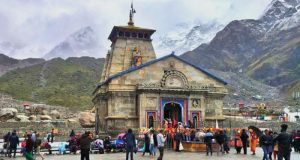

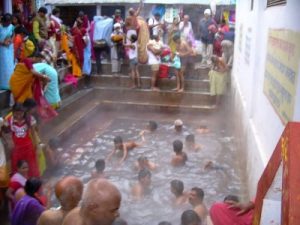

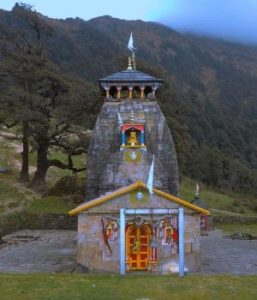



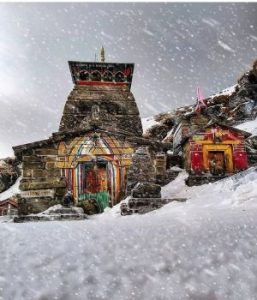
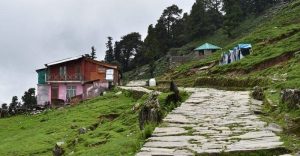


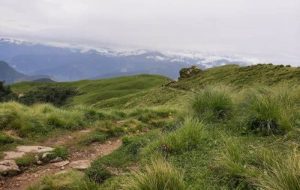



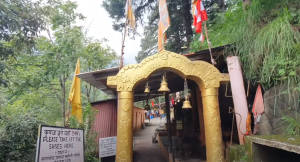



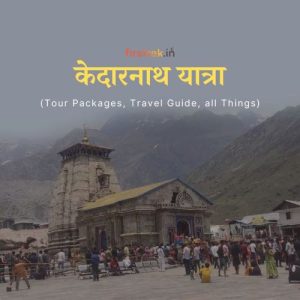
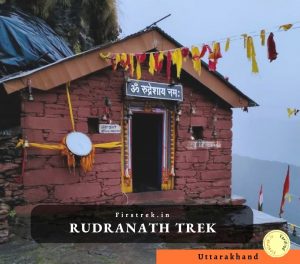
First time trek kiya aur dil jeet liya!" Madmaheshwar aur Rudranath ke raste toh thode tough the, lekin view aur spiritual vibe sab kuch bhula dete hain. Team ne har jagah help ki – food, stay, guide – sab perfect tha. Definitely recommend karungi!
Life changing experience! Panch Kedar trek ne mujhe sirf nature ke kareeb hi nahi, bhagwan Shiv ke darshan ka vishesh anubhav bhi diya. Kedarnath aur Tungnath ka darshan kabhi nahi bhool sakta. Trekking team bahut professional thi. Full 5 stars from my side!
A perfect combination of devotion and adventure." Panch Kedar ke mandiron ka itihaas sunke hi goosebumps aa gaye. Kalpeshwar tak ka last part kaafi peaceful tha. Guide ne legends bhi ache se explain kiye. Jai Bhole Nath! 🙏
Himalayas ke beech ye 5 Shiv mandir trek karna ek sapne jaisa tha. Main aur meri family is trip ko kabhi nahi bhoolenge. Rudranath ka forest path magical tha! Har devotee ko ye ek baar zarur karna chahiye.
I recently completed the Panch Kedar Trek 2024, and I must say, it was one of the most soulful and transformative experiences of my life. Coming from a fast-paced city like Mumbai, I was craving both inner peace and an adventurous escape—this trek delivered both, and beyond my expectations. From the moment we reached Kedarnath, I could feel a divine energy in the air. The snow-capped peaks, the chants of “Har Har Mahadev,” and the sight of the majestic temple standing tall amidst nature—it literally gave me goosebumps. Tungnath, being the highest Shiva temple in the world, was both physically challenging and spiritually rewarding. The trek route from Chopta to Tungnath and then further up to Chandrashila offered 360-degree panoramic views of the Himalayas—something that photos can never truly capture. Rudranath and Madmaheshwar were less crowded and deeply serene. Our guide shared the legend of the Pandavas, and how Lord Shiva’s different body parts appeared at these locations. The story, the quiet forests, and the natural surroundings made it feel like I was walking through history. The final temple, Kalpeshwar, was relatively easy to access but just as powerful in energy. Knowing that it’s the only Panch Kedar temple open year-round made it even more special. What impressed me the most was the well-organized trek package. The local team ensured our safety, comfort, and food arrangements were spot-on. They shared cultural stories and made sure we respected the local traditions throughout the journey. I came back from this trek feeling connected—to nature, to faith, and to myself. I highly recommend the Panch Kedar Trek to anyone who’s not just looking for an adventure, but also a journey of the soul. 🙏 Har Har Mahadev!